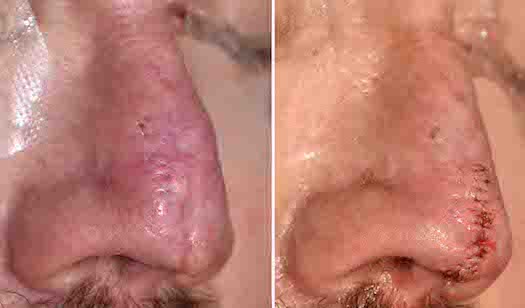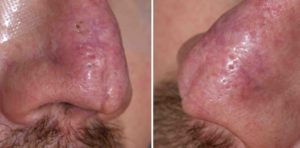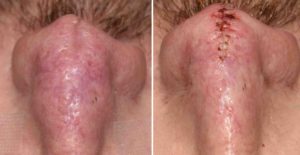Background: The use of implants in the nose has a long history, some of which is checkered with complications. One of the very unique aspects of putting an implant in the nose is that its soft tissue cover is thin. Given the basic effect of placing a structurally stable and unchanging dimensions of a synthetic implant, which exerts its effects by pressure, there is going to be some thinning of the overlying soft tissues. This natural biologic response, which occurs all over the body in response to implants, is affected by the size of the implant and how thick the overlying tissues are.
As a result some basic principles of using nasal implants is to avoid placing too large of an implant and, in particular, avoid placing an implant at the nasal tip area. The nasal tip is the one section of skin on the nose that is under the greatest tension since it is its most projecting point. It has the highest risk of developing soft tissue thinning and even skin necrosis. Even if skin necrosis does not occur removal of an implant that has been residing at the tip area will result in projection collapse due to loss of soft tissue.
When impeding soft issue problems develop at the tip of the nose in which an implant resides, the implant should be immediately removed. The solution is NOT to exchange it for a smaller implant or an implant that has a different material composition. Soft tissue grafting may be needed for nasal tip reconstruction.
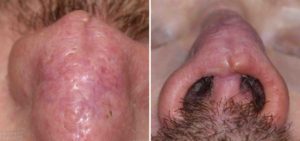
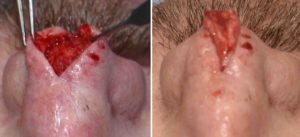
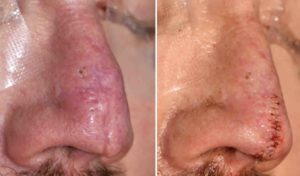
He will likely require an additional procedure to either place another soft tissue graft or even a crushed cartilage graft to add further tip projection.
Case Highlights:
1) Loss of nasal tip skin and soft tissue thickness can occur from implant extrusion.
2) Loss of nasal tip soft tissues requires a soft tissue graft not a hard tissue graft or implant.
3) Reconstruction of the nasal tip will likely require more than one soft tissue graft for recreation of adequate projection.
Dr. Barry Eppley
Indianapolis, Indiana

